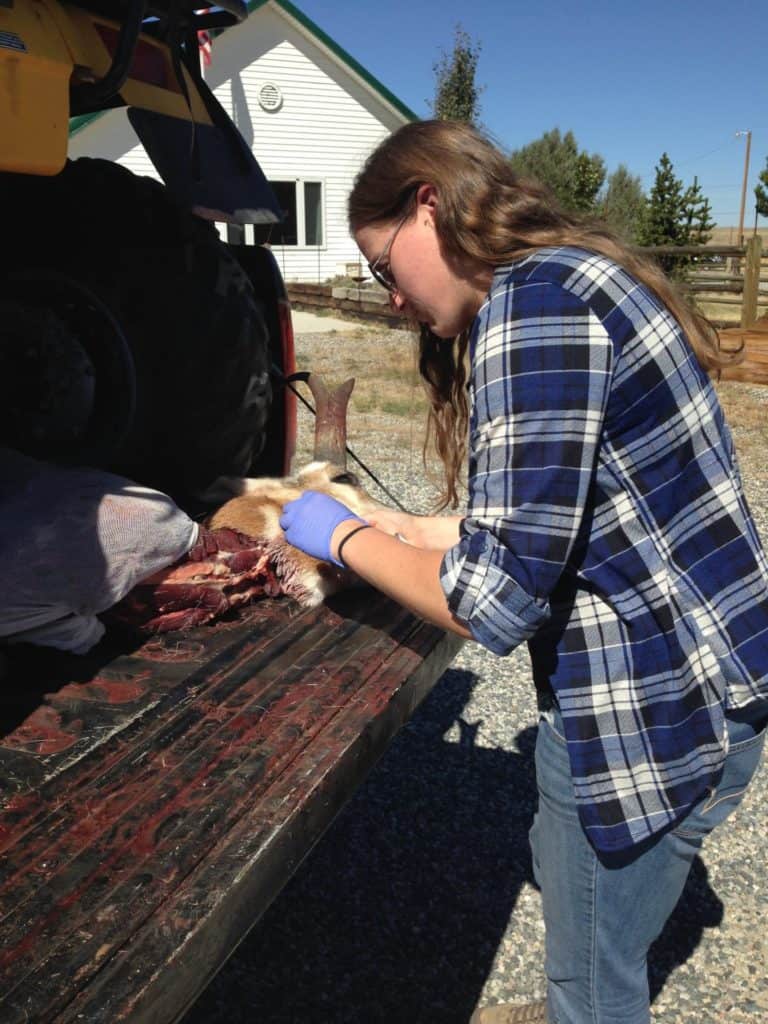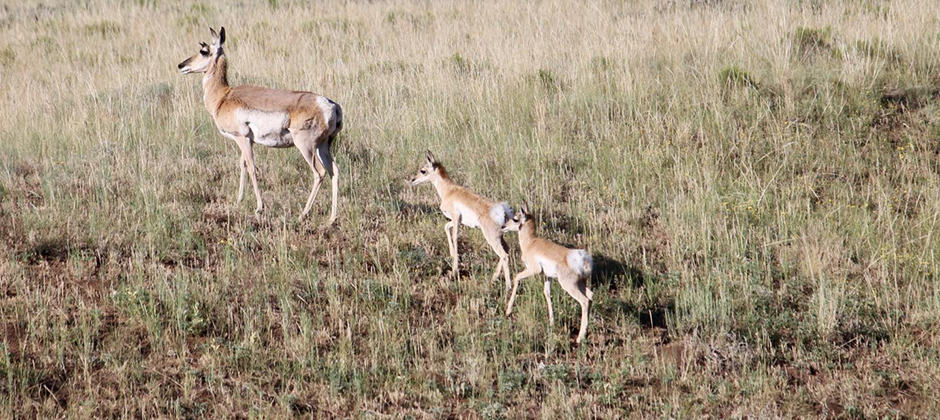Share this article
Pronghorn genetically similar throughout Wyoming
Even though pronghorn face obstacles from highways to mountain ranges across Wyoming, their genetics throughout the state are fairly similar, which seems to be good news for their viability.
“There has been tons of behavioral research on pronghorn, like GPS tracking, showing impacts that things like roads and fencing have on the species,” said TWS member Melanie LaCava, a PhD candidate at the University of Wyoming’s wildlife genomics and disease ecology lab. After winning first place in the PhD category for student posters at the 2016 TWS conference in Raleigh, North Carolina, LaCava recently published her research in the Journal of Mammalogy.
“We were interested in seeing if there were negative impacts to genetics,” LaCava said. “That would indicate long-term evolutionary impacts of humans on the environment.”
Sampling pronghorn genetics throughout the state required collaboration, so LaCava and her colleagues contacted the Wyoming Game and Fish Department for some assistance. The department collects muscle samples from hunter check stations, which LaCava and her colleagues could use for their genetics research. They also worked with the Wyoming State Veterinary Lab to get samples of pronghorn that the lab was were testing for diseases, and with University of Wyoming researchers that captured pronghorn to put GPS collars on them. “It was a huge collaborative effort interacting with them and taking advantage of those resources,” she said.

LaCava collects a genetic sample of pronghorn at a Wyoming Game and Fish Department hunter check station in Medicine Bow. Credit: Adele Reinking
LaCava and her team collected samples from 398 pronghorn — half of them male, half of them female — from across Wyoming. “Our primary goal was to spread out samples across the state as much as possible,” she said.
After examining the data, they were a bit surprised. “It seemed like pronghorn were one genetic group,” she said. “It seemed they were intermixing across the entire state.” Since it is challenging for the species to jump over fences, and highways and mountain ranges provide further obstacles, researchers expected the genetics to be differ in various parts of the state.
After collecting these data, they wanted to be sure there weren’t any subunits of populations in Wyoming, so they added a second genetic dataset to the project. They still didn’t find much variation.
LaCava said she suspects the ability for pronghorn to maintain connectivity across the landscape could be related to their migratory behavior. Pronghorn migrate seasonally, but unlike ungulates that use the same seasonal ranges and migratory routes year after year, pronghorn change strategies more often. They also don’t always stay in the same social group consistently. These flexible behaviors could mean more continual distribution of pronghorn genetics across the range.
“I think it’s a good sign that we haven’t been able to detect these barrier impacts,” LaCava said, although their relatively short evolutionary time on the landscape may also play a role. Barriers may still have an impact, she said, “but we’re just not seeing it yet in terms of genetics.”
LaCava hopes the data can be used as a comparison for future genetic research. It may also help scientists understand pronghorn disease susceptibility.
“Melanie’s study helps provide a foundation to look at heredity of genetic factors that make them susceptible to livestock diseases,” said Holly Ernest, the senior author of the study and a professor of wildlife genomics and disease ecology at the University of Wyoming. Researchers at the university recently discovered that Wyoming pronghorn experienced a recent die-off due to the livestock disease Mycoplasma bovis.
LaCava’s team is now conducting genetic research on other Wyoming ungulates, like bighorn sheep (Ovis canadensis), elk (Cervus canadensis) and mule deer (Odocoileus hemionus). “We can bring multiple species information together to use as much information as we can to make decisions, so conservation funding can be used as efficiently as possible,” she said.
Header Image: Pronghorn traverse the terrain in southeastern Wyoming. Credit: Melanie LaCava








